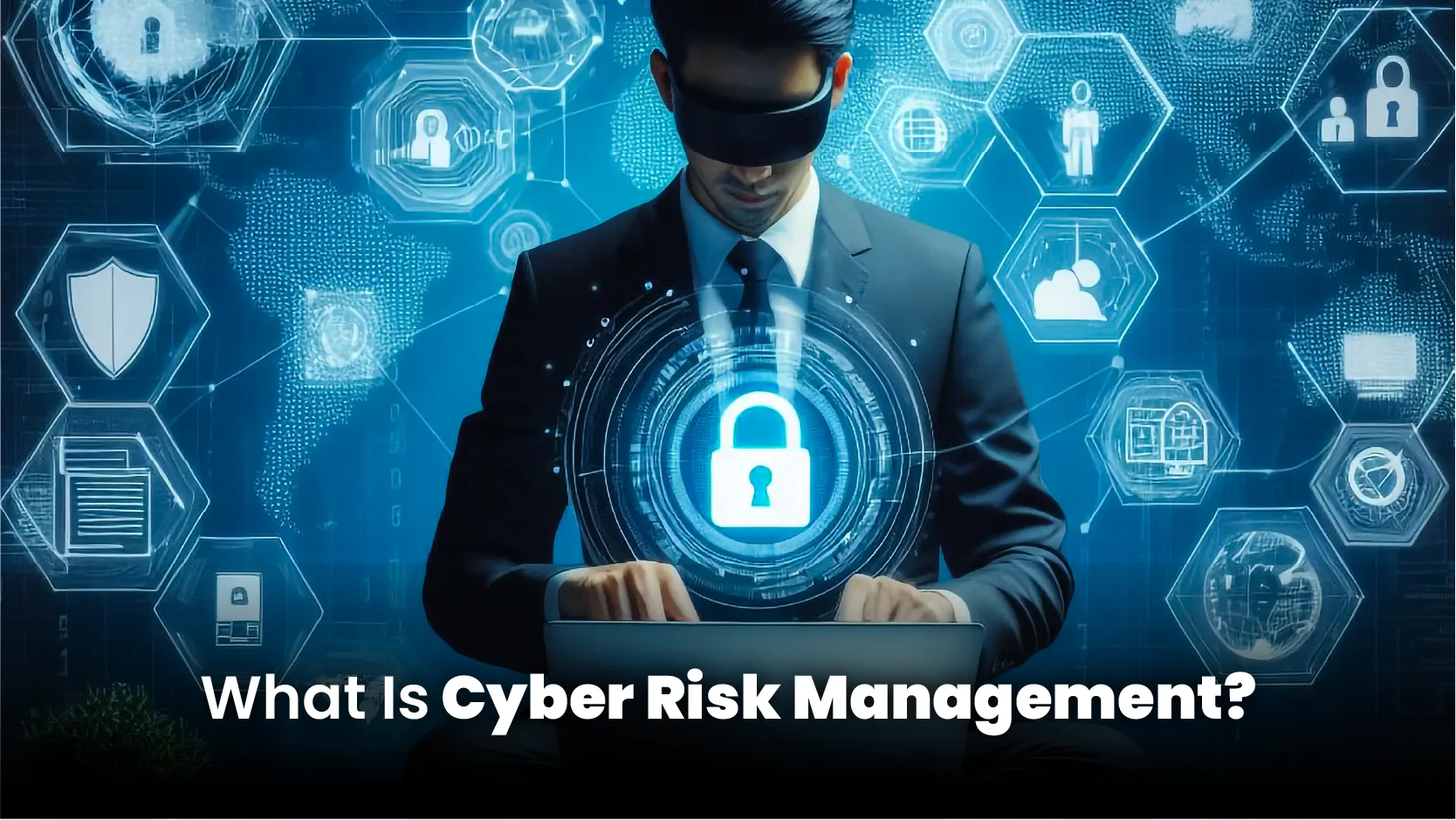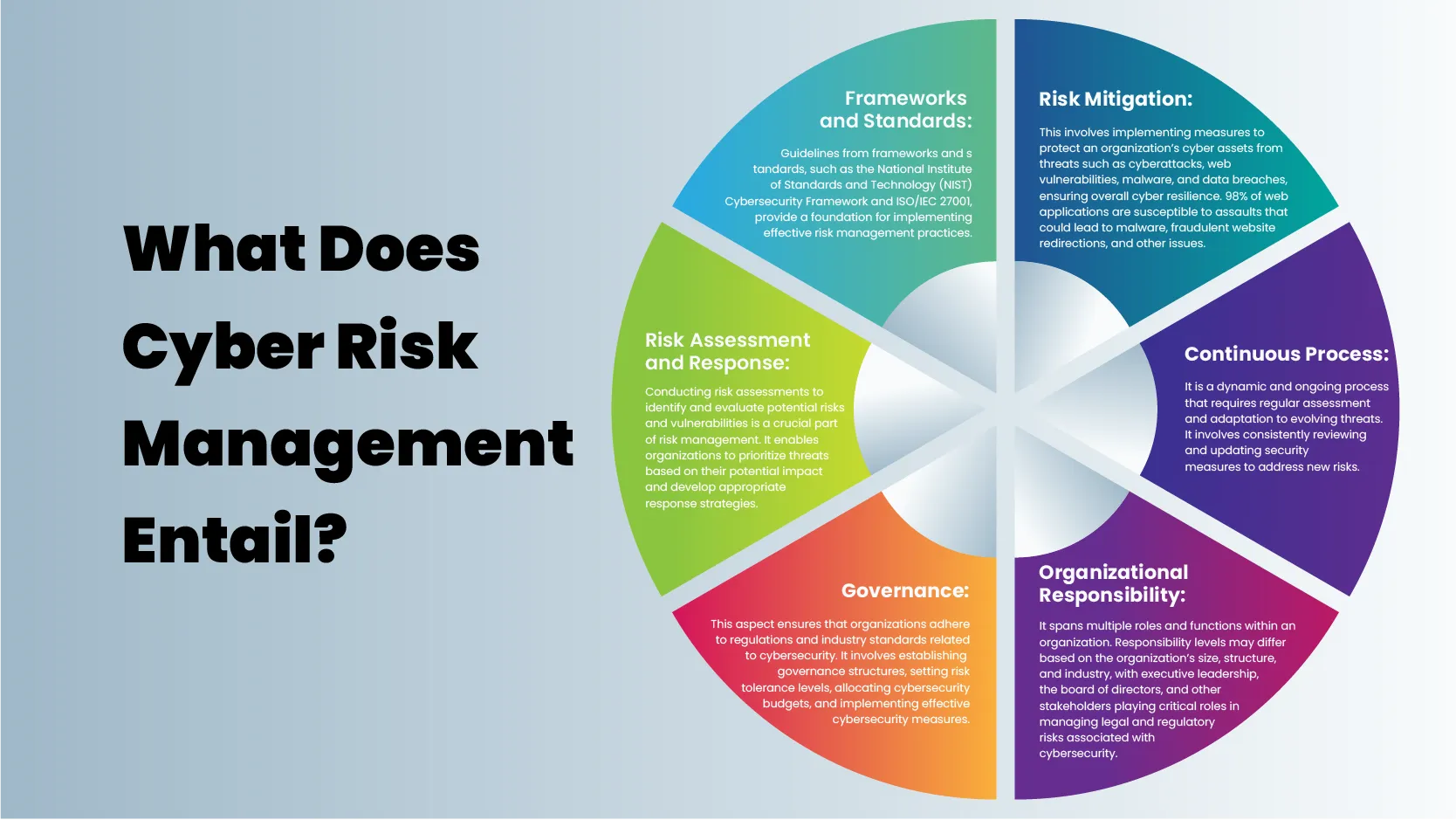In today’s rapidly evolving digital landscape, organizations face an alarming increase in cyber threats and attacks. Data breaches increased by 72% between 2021 and 2023, breaking the previous record. As technology continues to advance, so do the complexities and sophistication of cyber threats. Organizations need effective strategies to mitigate these risks and protect their digital assets.
This is where cyber risk management comes into play. It provides organizations with a systematic approach to managing and mitigating cyber risks. By implementing comprehensive risk management practices, organizations can effectively identify vulnerabilities, assess potential risks, and develop strategies to protect their digital assets. Let’s learn more about it.
What Is Cyber Risk Management?
 Cyber risk management is a critical component of contemporary risk management programs. It includes procedures and methods designed to reduce and evaluate the wide range of risks related to cybersecurity and technology. Its main goal is to identify and evaluate hazards using thorough risk assessments that take into account a variety of factors and rank them according to their impact.
Cyber risk management is a critical component of contemporary risk management programs. It includes procedures and methods designed to reduce and evaluate the wide range of risks related to cybersecurity and technology. Its main goal is to identify and evaluate hazards using thorough risk assessments that take into account a variety of factors and rank them according to their impact.
In the US, one in three businesses has obtained cyber liability or data breach insurance. This explains the tremendous revenue growth of the cybersecurity market, estimated to hit $185.70 billion by 2024. Since it provides a means to mitigate financial losses resulting from cyber incidents, it has become an essential component of business risk management.
Also Read: What Is API Security and Why Is It Important?
What Does Cyber Risk Management Entail?
 Cyber risk management covers several key areas, including:
Cyber risk management covers several key areas, including:
- Risk Mitigation: This involves implementing measures to protect an organization’s cyber assets from threats such as cyberattacks, web vulnerabilities, malware, and data breaches, ensuring overall cyber resilience. 98% of web applications are susceptible to assaults that could lead to malware, fraudulent website redirections, and other issues.
- Continuous Process: It is a dynamic and ongoing process that requires regular assessment and adaptation to evolving threats. It involves consistently reviewing and updating security measures to address new risks.
- Organizational Responsibility: It spans multiple roles and functions within an organization. Responsibility levels may differ based on the organization’s size, structure, and industry, with executive leadership, the board of directors, and other stakeholders playing critical roles in managing legal and regulatory risks associated with cybersecurity.
- Governance: This aspect ensures that organizations adhere to regulations and industry standards related to cybersecurity. It involves establishing governance structures, setting risk tolerance levels, allocating cybersecurity budgets, and implementing effective cybersecurity measures.
- Risk Assessment and Response: Conducting risk assessments to identify and evaluate potential risks and vulnerabilities is a crucial part of risk management. It enables organizations to prioritize threats based on their potential impact and develop appropriate response strategies.
- Frameworks and Standards: Guidelines from frameworks and standards, such as the National Institute of Standards and Technology (NIST) Cybersecurity Framework and ISO/IEC 27001, provide a foundation for implementing effective risk management practices.
Why Is Cyber Risk Management Important?
Cyber risk management plays a vital role in today’s digital landscape due to the ever-evolving technology and the growing number of cyber threats. Here are several reasons why it is crucial:
- Protecting Organizations from Cyber Attacks: Effective risk management allows organizations to identify, assess, and mitigate potential cyber threats and vulnerabilities. By implementing robust risk management strategies, organizations can minimize the likelihood and impact of cyber attacks.
- Safeguarding Sensitive Information: As organizations increasingly rely on technology, they handle vast amounts of sensitive data. It ensures the protection of this data from unauthorized access, theft, or misuse. It helps establish strong security measures and protocols to safeguard sensitive information.
- Maintaining Business Continuity: Cyberattacks have the potential to stop operations for businesses, resulting in losses of money and harm to their reputation. Organizations can reduce the impact of cyber incidents and maintain business continuity by creating incident response plans and recovery methods through good cyber management.
- Compliance with Regulations: Many industries have specific regulations and compliance requirements related to cybersecurity. It helps organizations meet these regulatory obligations, avoiding penalties or legal consequences.
- Building Customer Trust: Customers expect organizations to prioritize the protection of their personal and financial information. By implementing robust risk management practices, organizations can demonstrate their commitment to data security, building trust and confidence among their customers.
- Mitigating Financial Losses: Cyber attacks can result in significant financial losses, including costs associated with incident response, recovery, legal actions, and reputational damage. Cyber risk management helps organizations identify potential financial risks and implement measures to mitigate them effectively.
- Enhancing Situational Awareness: It promotes situational awareness within organizations. It enables organizations to identify and understand potential threats, vulnerabilities, and risks, empowering them to take proactive measures to address them.
End Note
Cyber risk management is an essential practice for organizations to protect their digital assets, ensure data privacy, and maintain business continuity in the face of evolving cyber threats. As technology continues to advance, the importance of effective risk management will only increase.
Organizations must remain vigilant, adapt to the changing threat landscape, and implement robust security measures to mitigate risks. By prioritizing risk management, organizations can navigate the digital landscape with confidence and safeguard their valuable information in the years to come.
































